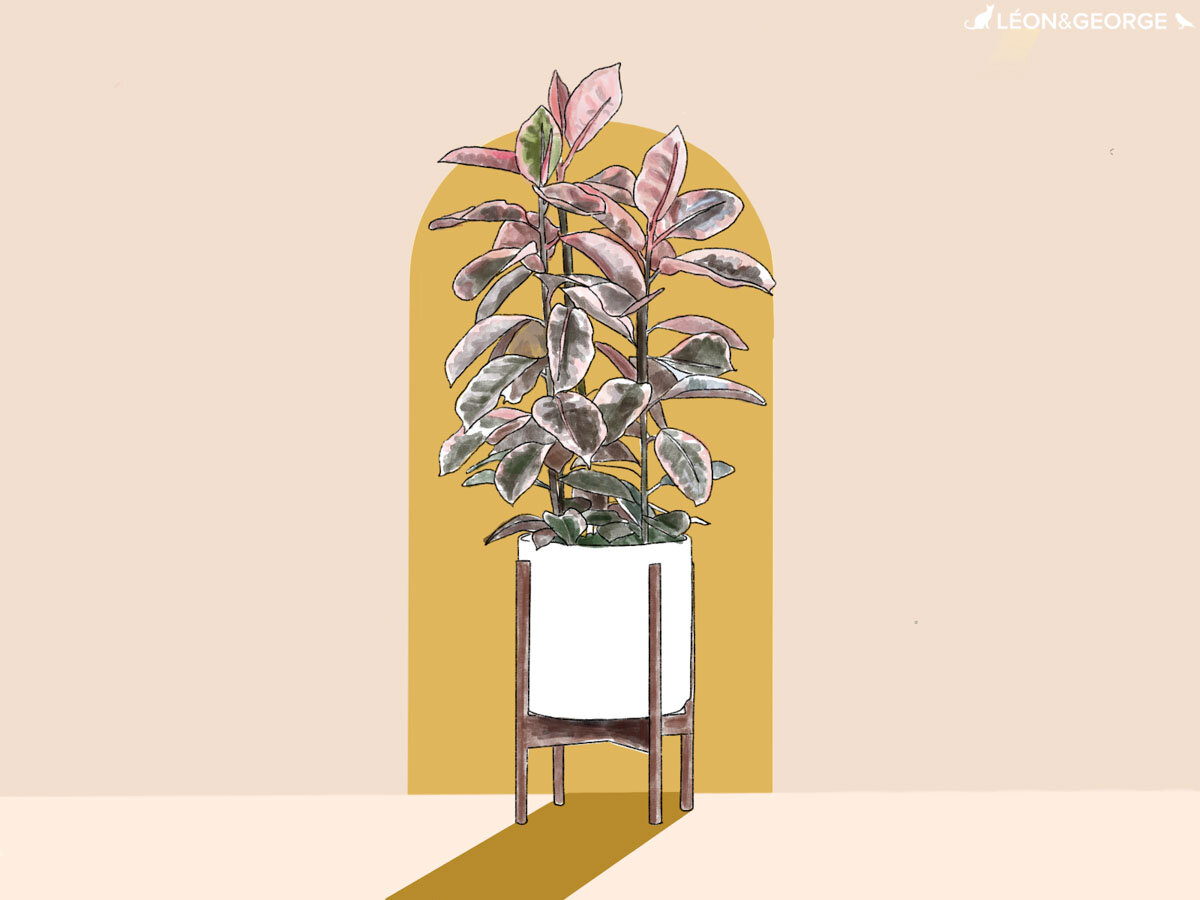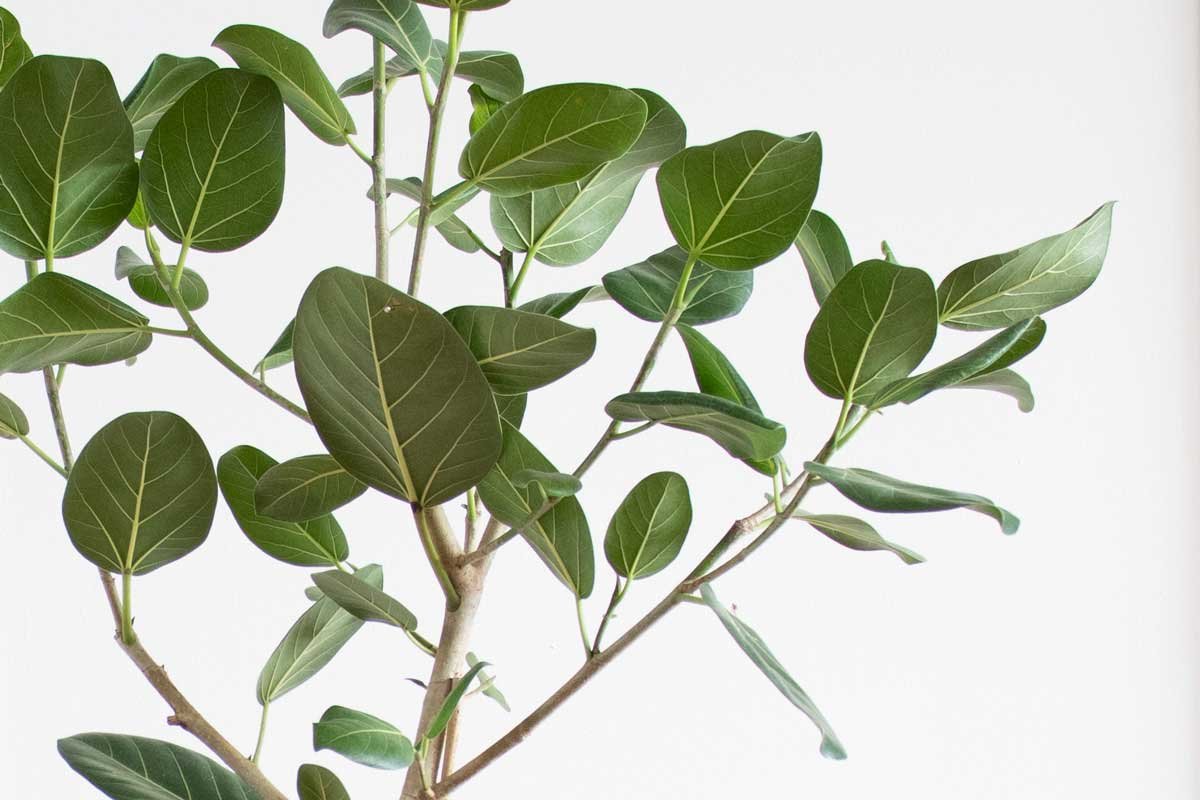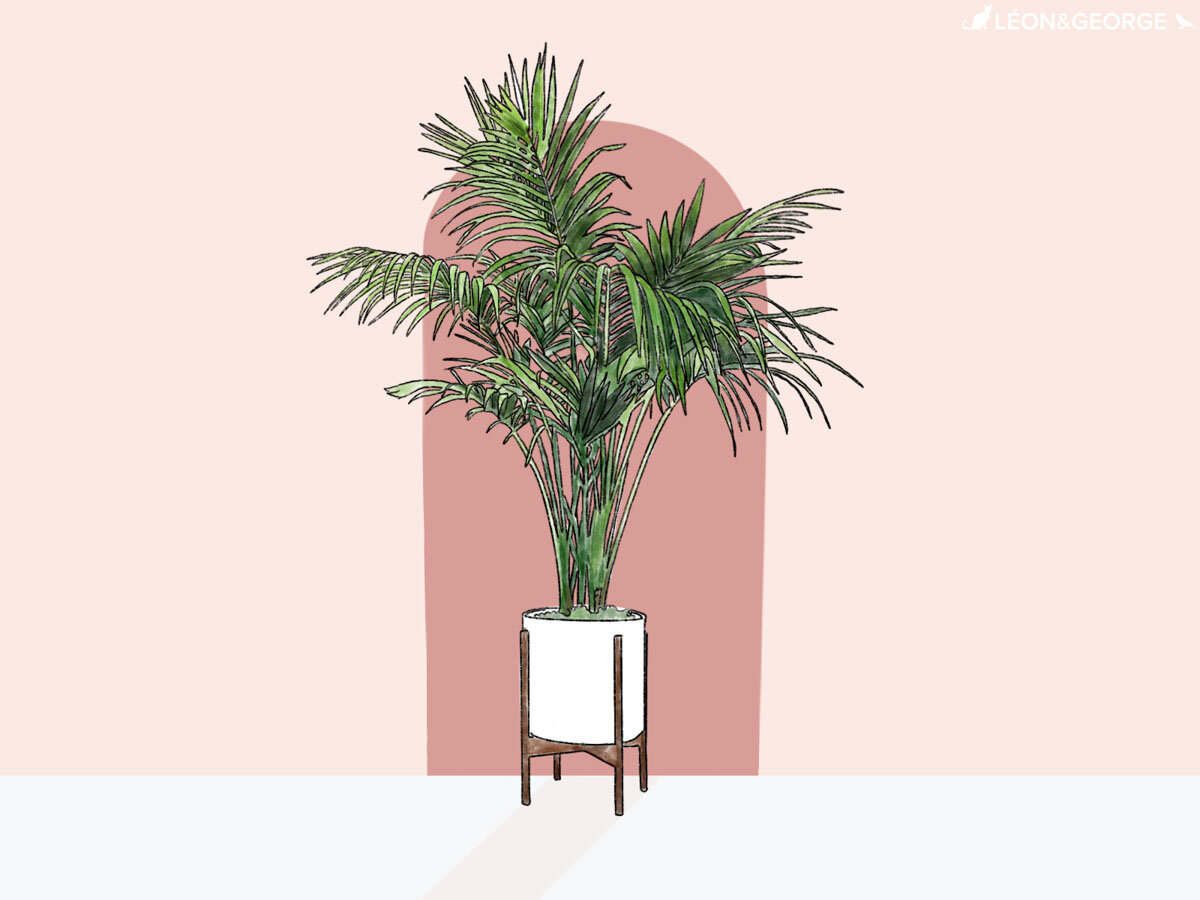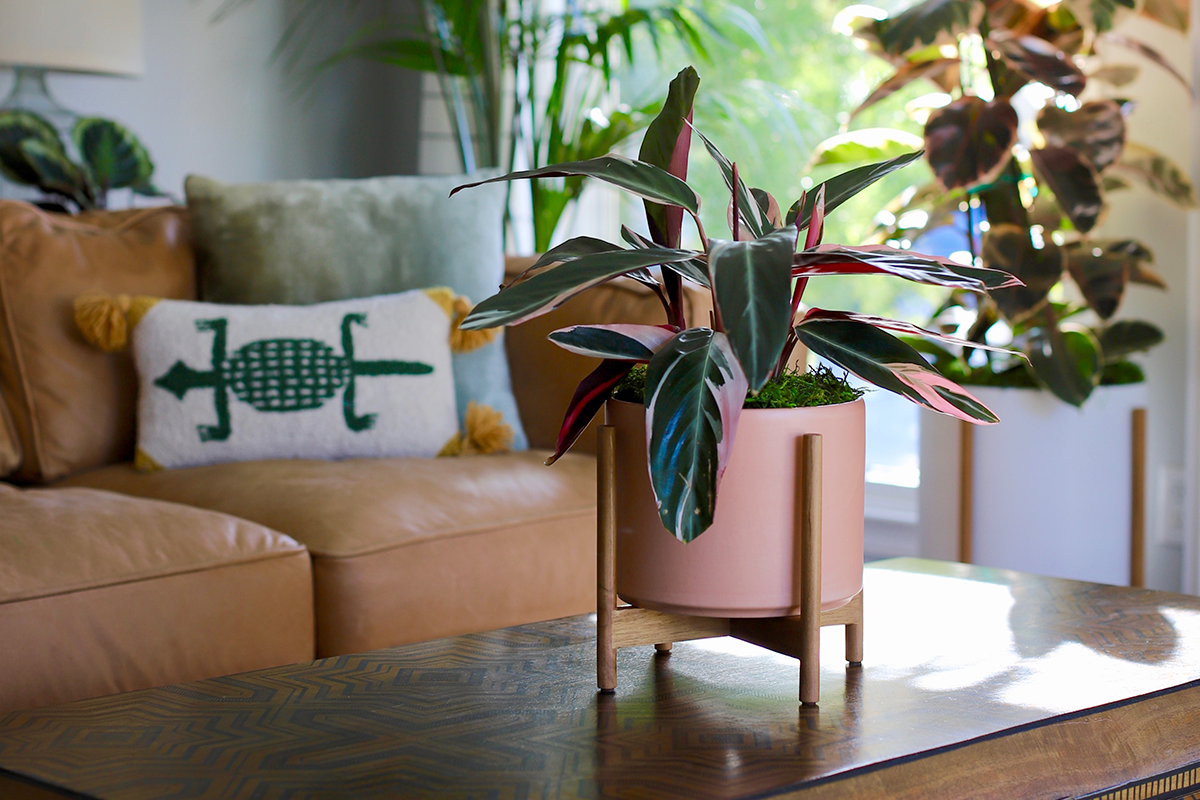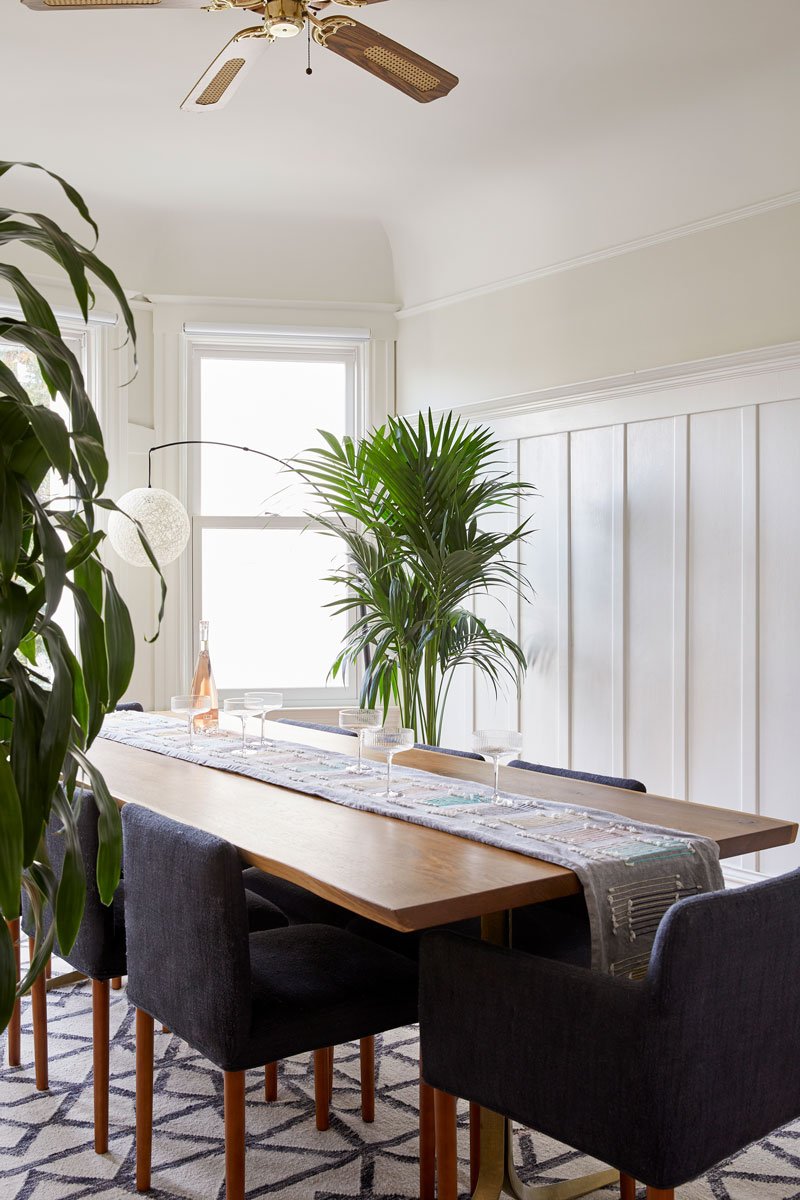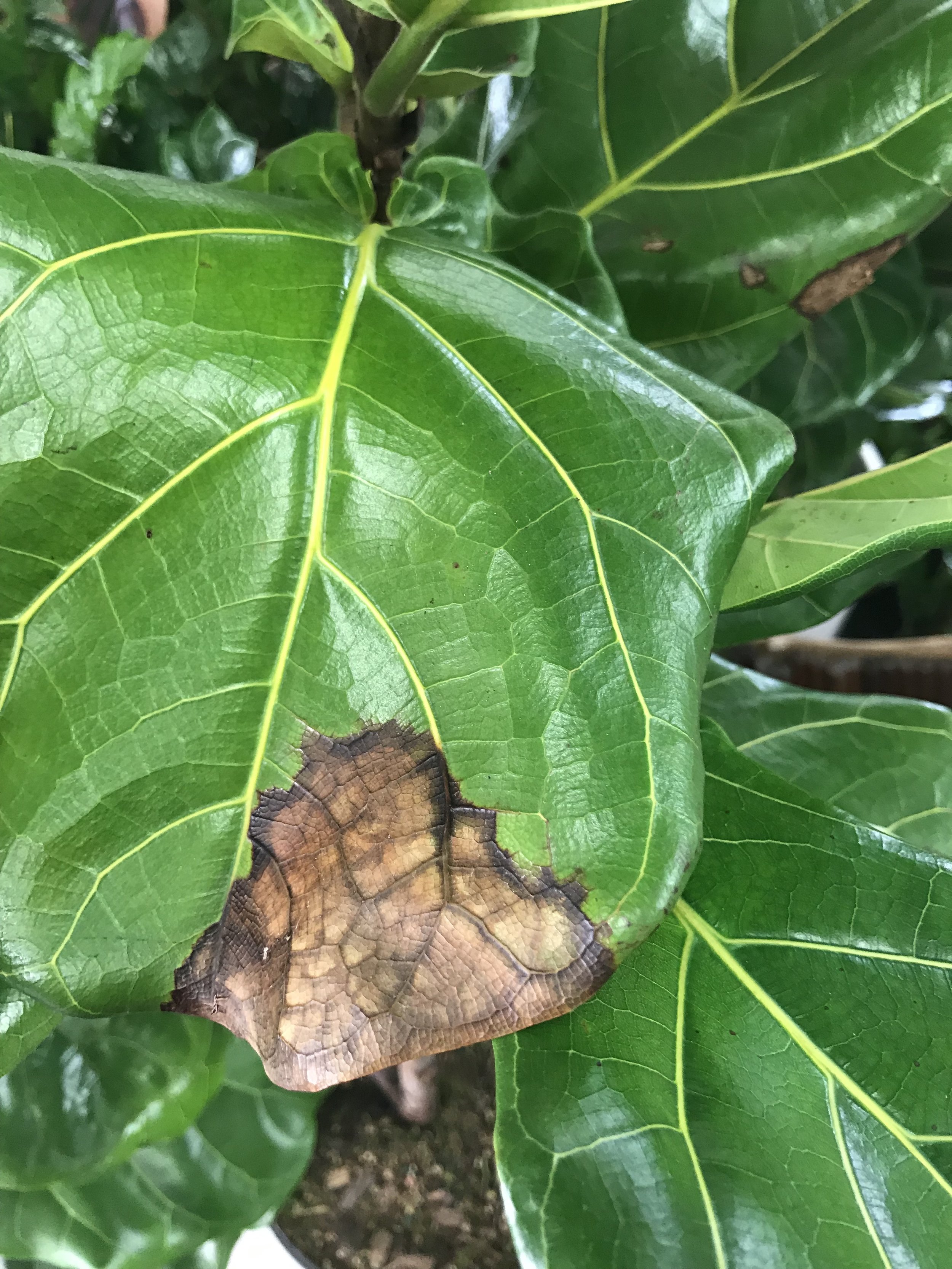A gorgeous variegated version of the burgundy Rubber Tree, the strawberry-colored leaves of the Pink Rubber Tree make this plant a unique addition to any indoor space. But like so many variegated plants, the Pink Rubber Tree can be slightly more sensitive and requires the right balance of light and humidity to thrive. Read on for simple care instructions for the Pink Rubber Tree, including light requirements, watering frequency, and how to troubleshoot common problems you may encounter along the way.
What type of light does the Pink Rubber Tree need?
Pink Rubber Trees prefer plenty of bright indirect light, though they can also adjust to medium indirect light as well. Keep out of harsh direct sunlight as this may scorch their leaves.
How to water your Pink Rubber Tree
The Pink Rubber Tree likes to dry out between waterings — water whenever the top two inches of soil are dry, or about once a week to 10 days. Avoid overwatering, and note that your watering schedule may be less frequent during winter months.
Is the Pink Rubber Tree a fast grower?
During the spring and summer is when the Pink Rubber Tree usually grows the most. It can grow up to eight feet tall indoors. Fertilize your your Pink Rubber Tree 1-2 times per month in the spring and summer with indoor plant food, or foliar feed year round.
Common problems with Pink Rubber Trees
Yellow or pale leaves
Yellow leaves on a Pink Rubber Tree can be common. Keep in mind if it’s just one yellow leaf here and there (and it may drop off the plant), it most likely is just an older leaf that’s on its way out. However, if there are many yellow leaves, particularly at the bottom of the plant, this could be a sign of overwatering. Make sure the top soil of your plant is dry before watering, and also look at the roots to make sure it’s not waterlogged.
If the leaves are pale or not that “pink”, this could be a sign of the plant not getting enough light or warmth. Pink Rubber Trees, like most ficus, do not like changes in temperature or cold drafts. They also do best with loads of bright indirect light.
Brown edges
Brown edges on a Pink Rubber Tree leaf usually indicate underwatering, though like many plant issues, there could be other reasons! First, rule out that your plant is not underwatered. One way of quickly assessing the water situation if you are unsure is to lift your plant up. If it feels lighter than you’d expect, it may be very thirsty! Check the soil with your finger — if it’s bone dry, that’s another sign your plant needs a bit more water. If your plant definitely does not seem underwatered, it could also be overwatered, again check the soil, as well as the roots, for accumulated moisture.
Dropping leaves
Pink Rubber Trees like other ficus can be sensitive to change, and it is not uncommon for this plant to drop leaves after being moved. Your plant may also drop leaves if it is subject to temperature changes or drafts. Make sure your plant is moved away from air vents, heaters, or windows with cold air drafts.
How to maintain a beautiful and healthy Pink Rubber Tree
Take care of your Pink Rubber Tree and it will take care of you! Below are simple tips to continue caring for your Pink Rubber Tree over time.
Pruning Pink Rubber Trees
Remove occasional dry or dead leaves all year round, but save any major pruning for the spring and summer months. When pruning your Pink Rubber Tree, wear gloves and protect your floor with newspaper — the sap that leaks out can be sticky and damage floors. Use sharp, clean shears and cut just above the node at a 90 degree angle.
Cleaning Your Plant
Take each leaf between two soft tissue cloths and wipe off the top to reveal a healthy shine. Do this at least once a month to keep away pests and help the plant soak in more light!
How to repot Pink Rubber Trees
Houseplants grow much slower than they would in the wild. Depending on the size of your plant and the density of the roots, this is nice to do every 2-3 years to provide fresh nutrients and encourage new growth.
When to repot - if the roots start to become visible outside the soil, it is time to consider repotting.
Pot sizing - if you want your plant to grow taller, find a nursery pot that’s 2” in diameter larger than the current pot. If you want your plant to stay the same height, you can reuse the same pot and simply change the soil.
Get your hands dirty - spread out newspaper on the floor, remove the plant from the pot and shake off as much of the old soil as possible so that you have clean roots. Place the plant in the center of the pot, add new soil and pat down firmly. Water the soil thoroughly and place the plant in an area with bright indirect light. Your plant will take 2-4 weeks to settle from the shock and adjust to its new home.
How to propagate a Pink Rubber Tree
There are many ways to do propagate Pink Rubber Trees, but water propagation is generally the easiest way to go about it. Follow these instructions to propagate your Pink Rubber Tree:
Select a small branch to propagate - Using sharp, clean scissors or shears, cut a two to three inch branch just above a node (a leaf joint) of your Rubber Tree.
Place in water - Find a clear glass and fill with water. Make sure only the stem of the branch is submerged, and no leaves are sitting in the water.
Place in a bright area and wait! - Avoid any direct sun. If desired, change the water out every few days to keep it fresh. It could take up to several weeks for your cutting to form roots.
Transfer to soil - After some time, you will start to see tiny white roots emerging from the cutting. Give it a few more days until the roots have grown, and then transfer to indoor potting soil. A small pot is best — no larger than 6” in diameter.
Keep moist - During the first few weeks, or until your plant feels firmly rooted in its soil, regularly water and drain your plant. The soil should be just barely moist to the touch at all times. Once it is rooted, you can begin to water less frequently, whenever the topsoil is dry to the touch.
Illustrations by our talented plant stylist, Kailie Barnes.
Indoor plants, potted & delivered
Premium plants paired with stylish pots, plus lifetime plant care support. Order online at leonandgeorge.com
